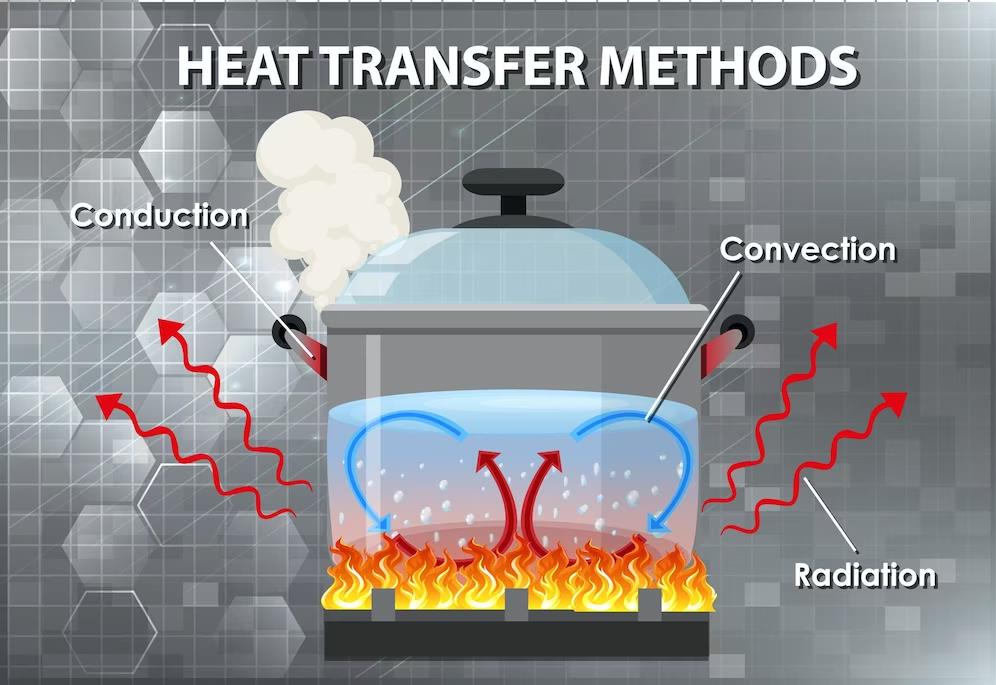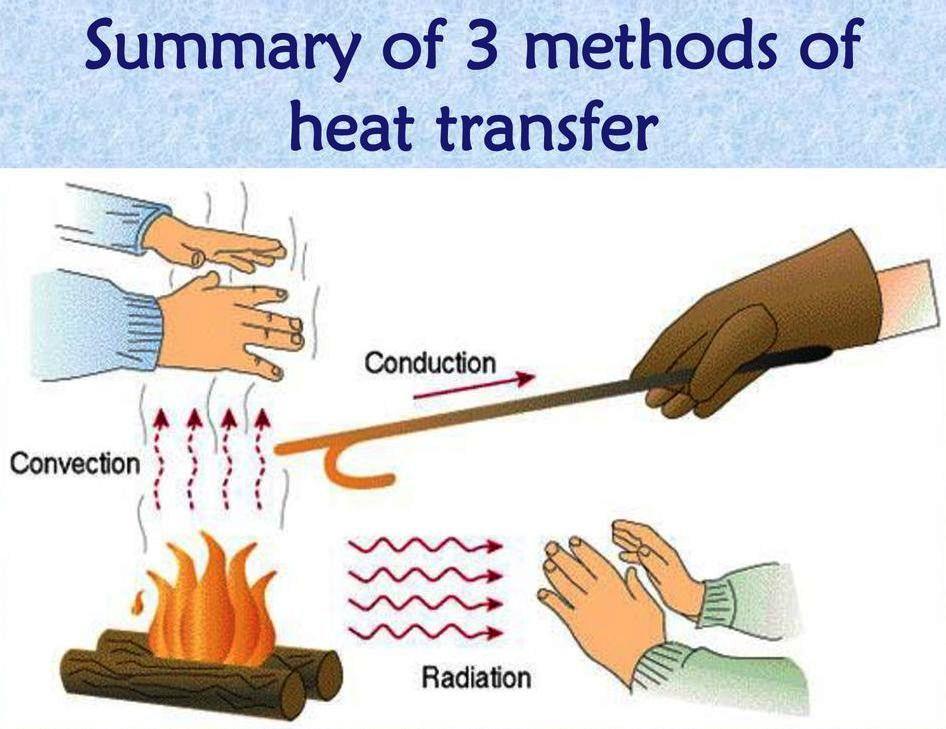Heat transfer is the movement of thermal energy from one object or system to another. This can occur in a variety of ways, including conduction, convection, and radiation. Each method of heat transfer plays a significant role in the everyday world, from cooking food on a stove to heating buildings in the winter. The process of heat transfer in a boiler involves three primary methods: conduction, convection, and radiation. Let’s discuss each of these methods in more detail.

-
Conduction Heat Transfer:
Conduction is the transfer of heat through a material without any movement of the material itself. In other words, heat is transferred from one object to another by direct contact. The rate of heat transfer by conduction depends on the thermal conductivity of the material, the temperature difference between the two objects, and the distance between them. Metals are good conductors of heat, while insulators, such as air and foam, are poor conductors.
A practical example of conduction is cooking on a stove. The heat from the stove is transferred to the cooking pot by direct contact, and the pot, in turn, heats the food. Similarly, a metal spoon placed in a hot cup of tea will conduct heat from the tea to the spoon, making it too hot to touch.
-
Convection Heat Transfer:
Convection is the transfer of heat through the movement of fluids, such as liquids and gases. This method of heat transfer occurs when a fluid is heated, causing it to rise and cooler fluid to replace it. This creates a continuous flow of fluid, which transfers heat from one location to another.
An example of convection is a radiator in a home heating system. The hot water in the radiator heats the air around it, causing it to rise and cooler air to replace it. This creates a flow of warm air, which heats the room. Similarly, a pot of boiling water on a stove will cause the water at the bottom to heat up and rise to the top, transferring heat throughout the pot.
-
Radiation Heat Transfer:
Radiation is the transfer of heat through electromagnetic waves, such as light and infrared radiation. Unlike conduction and convection, radiation does not require a medium to transfer heat. Instead, heat is transferred through empty space.
An example of radiation is the heat we feel from the sun. The sun emits electromagnetic waves, which travel through space and are absorbed by the Earth’s surface, causing it to warm up. Similarly, a person sitting next to a fire will feel the heat radiating from the flames.
Conclusion:
In conclusion, heat transfer is a fundamental process that occurs in everyday life. Understanding the methods of heat transfer is essential in many industries, such as energy, manufacturing, and aerospace. Conduction, convection, and radiation are the three primary methods of heat transfer, each with its unique characteristics and applications. By understanding these methods, we can design more efficient systems that transfer heat more effectively and reduce energy consumption.
Question and Answers about Heat Transfer
- What is heat transfer? Heat transfer is the process of exchanging thermal energy between two or more objects or systems. It occurs whenever there is a temperature difference between two objects or systems, and the energy is transferred from the hotter object/system to the cooler one until they reach thermal equilibrium.
- What are the three methods of heat transfer? The three primary methods of heat transfer are conduction, convection, and radiation. Conduction is the transfer of heat through direct contact, convection is the transfer of heat through the movement of fluids, and radiation is the transfer of heat through electromagnetic waves.
- What is an example of conduction heat transfer? An example of conduction heat transfer is when you touch a hot stove. The heat from the stove is transferred through the metal and into your hand, causing it to feel hot.
- What is an example of convection heat transfer? An example of convection heat transfer is when you boil water in a pot. The heat from the stove is transferred to the water, causing it to rise and circulate, which creates a convection current that evenly distributes the heat.
- What is an example of radiation heat transfer? An example of radiation heat transfer is when you feel the warmth of the sun on your skin. The sun emits radiation, which travels through space and is absorbed by your body, causing it to feel warm.
- How does insulation affect heat transfer? Insulation reduces heat transfer by creating a barrier that slows down or blocks the transfer of heat. It works by reducing conduction, convection, and radiation, and is often used in buildings, refrigeration systems, and other applications to improve energy efficiency and reduce energy consumption.
- What is a heat exchanger? A heat exchanger is a device that transfers heat from one fluid to another, without the fluids mixing. It consists of two fluid channels separated by a barrier, which allows the heat to be transferred through conduction or convection. Heat exchangers are used in many applications, such as refrigeration systems, power plants, and HVAC systems.
- Heat Exchanger Design Guide
 Boilersinfo Boiler and Mechanical Power Digital Library
Boilersinfo Boiler and Mechanical Power Digital Library









